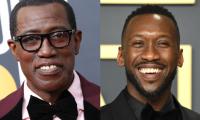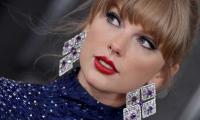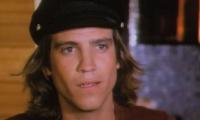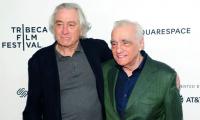It is noteworthy that in 1922 Belarus was one of the four units that formed the Soviet Union. And in 1991 three of the four units – Russia, Belarus and Ukraine – were the first ones to sign the death warrant of the Soviet Union in the shape of the Belovezha Accord.
The new head of state in Belarus was Shushkevich, taking over as the first leader of independent Belarus. He ruled for three years and during that period Lukashenko emerged on the Belarussian scene. As the head of the Anti-Corruption Committee of Belarus, Lukashenko accused 70 top leaders in the government of being corrupt including the head of state, Shushkevich.
After these accusations, parliament carried a vote of no-confidence resulting in the removal of Shushkevich. Later, it transpired that the accusations against Shushkevich were ill-founded. It now seems that in many countries, corruption accusations are used to make a mountain out of a molehill and topple governments, and then people realize that most such charges were concocted by those who wanted to assume power. Those who come to the helm in such a manner themselves prove to be corrupt and just to remain in power destroy democracy, and Lukashenko did exactly the same.
Lukashenko had been a member of the communist party from 1980 to 1990 when he changed loyalties as Yeltsin had done. Lukashenko became a member of the Belarus assembly in 1990 and started targeting the head of state, Shushkevich, and PM Kebich. Though these were the two who had signed the Belovezh Accord precipitating the demise of the Soviet Union and the final independence of Belarus. After the independence of Belarus in 1991, a new constituent commission came into being, which spent three years to develop consensus for a new constitution.
In early 1994 the assembly passed it, and paved the way for elections in July 1994. And so Belarus became a presidential republic. In 1994, Lukashenko at age 40 emerged as a young leader and a perfect foil for 60-year-old Shushkevich. When the first presidential elections took place, Lukashenko defeated Kebich and became the first elected president of Belarus. We can gauge a high level of transparency in the first presidential elections by the fact that the then prime minister Kebich – who was a candidate in the election – could hardly muster 15 percent votes in the final round.
Lukashenko received 80 percent votes and has remained president continuously for the past 26 years, getting himself elected again and again. A significant feature of Lukashenko’s rule is that he has retained many characteristics of the Soviet system and – contrary to Russia – has prevented unrestrained privatization. A majority of big industries are still under state control. He has also preferred better relations with Russia rather than with the EU. Almost immediately after his first election, he went to Moscow and addressed the Russian Duma with Russian president Yeltsin. Since then, he has been talking about a new union with Russia.
In 1996, Belarus and Russia formed a commonwealth and then in 1997 agreed to form a formal union. Finally, in December 1999 they signed an accord that was supposed to result in a federation with a single currency, which never came into being. As a result of the union, citizens of both countries can travel around without a visa and also live and work anywhere in the two states. Lukashenko was to face second elections in 1999 but at the height of his popularity in 1996 he held a referendum to extend his tenure by two years.
The second elections were held in 2001 but Lukashenko used state machinery to get himself reelected. The worst fault in a presidential system is that parliament cannot remove the president without an impeachment, which is too difficult to carry out. In 2001, and then in all subsequent elections, international observers have expressed strong reservations and termed them illegal. But, Lukashenko as ‘the last dictator of Europe’ is still in power. He got himself elected for the third term in 2006, for the fourth in 2010, for the fifth in 2015; still not content, in August 2020 he declared himself elected for the sixth term.
In both Belarus and Russia circumstances are similar: both suppress dissent and opposition, and both Lukashenko and Putin have been following a similar trajectory of authoritarianism. Both do not allow their opponents to freely engage in politics; media outlets are under control with curbs on the press. Both have concentrated power in their hands and are not willing to quit. Putin is 68 years old and has been ruling for 20 years; Lukashenko is just two years younger than Putin and has kept power for over 26 years now. Both have mutilated constitutions to serve their interests.
For the past four months, there have been massive demonstrations in Belarus. Before the elections, presidential candidate Svetlana Tikhanovskaya appeared to be very popular; but she was given just 10 percent of the votes whereas Lukashenko once again claimed over 80 percent. Svetlana is just 38 and people love her for she has emerged as a standard bearer of human rights. Her husband Sergei Tikhanovski wanted to contest the presidential election but Lukashenko put him behind bars, prompting Svetlana to emerge as a substitute candidate. Both husband and wife are opposed to any union with Russia and have a soft corner for the EU.
Perhaps they know that the EU is the only way to defend human rights and democracy. Lukashenko has not allowed any kind of political parties to prosper in Belarus; just as Putin has been doing in Russia. Whenever any political leaders or parties try to assert themselves, these presidents crush them with state power. Such authoritarian and dictatorial tendencies have created fairly adverse conditions for democracy in the first two decades of the 21st century. Be it Putin in Russia or Bush Junior and Trump in the US; Erdogan in Turkey or Modi in India; or Bolsonaro in Brazil or Duterte in the Philippines – all have crushed democratic traditions and human rights.
Lukashenko of Belarus is perhaps the worst. Now the latest situation is that many countries in the world consider Svetlana a significant leader and perhaps the future president of Belarus. Lukashenko will depend on Russia to get help for quelling demonstrations in Belarus. We remember in Ukraine some years back a similar situation had developed when a pro-Russia president after reelection tried to get help from Russia but could not withstand the deluge of people on the streets. He had to flee to Russia, after which Russia occupied Crimea which was until then part of Ukraine. Crimea is still under the Russian control.
Belarussian opposition leader Svetlana Tikhanovskaya is now in exile and on Dec 16 collected the Sakharov Human Rights Prize at the European Union Parliament in Brussels. She is looking for support for her pro-democracy movement. The EU awarded its top prize to the Belarus opposition which Tikhanovskaya collected on its behalf. As Belarus is in the grip of turmoil, it sends a message to other countries that fraudulent elections ultimately prompt people to agitations. Curbs on media may help for a while but such tactics don’t work forever.
If state institutions act as dribblers and kick democracy around for long, sooner or later democracy contains the seeds of its own recovery. The people may buckle under pressure temporarily but if an individual or a group keeps undermining democracy, people respond with vengeance. The lesson is not to indulge that individual or group for long. Tikhanovskaya may be short in physical stature, but her political stature is reaching new heights; one hopes that in 2021, Belarus gets its democracy restored.
Concluded
The writer holds a PhD from the University of Birmingham, UK and works in Islamabad.
Email: mnazir1964@yahoo.co.uk
In Pakistan, national identity card is critical as it allows citizens to vote and access government benefits
‘Random Recalls’ by Air Commodore Abdul Wajid Salim is a memoir, filled with stories from his time in PAF
Pakistan has generally aimed for a peaceful neighbourhood and as well as peace within the region
The West has been busy arming Ukraine instead of making any sincere efforts to douse the flames
A worker fixes a flag of the ruling Bharatiya Janata Party on a hoarding of their leader and India’s Prime Minister...
A pedestrian leaves the entrance of the headquarters of the Federal Board of Revenue building in Islamabad —...







